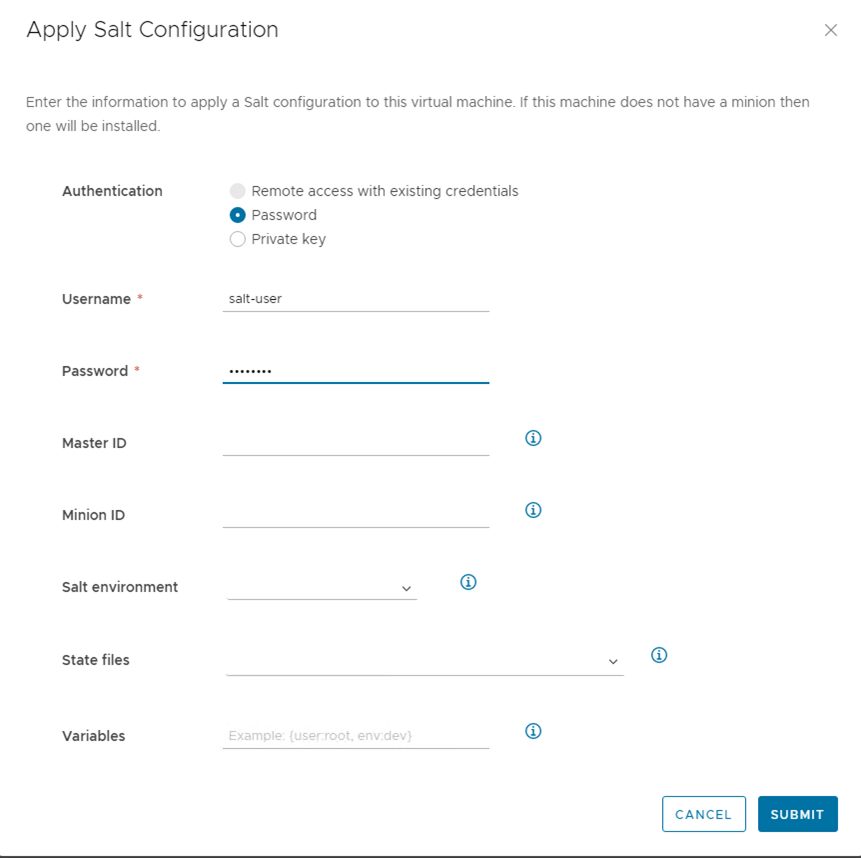As a template developer, you can configure and deploy a Salt minion using cloud templates for air-gapped environments.
Prerequisites
- Ensure that the /etc/salt/cloud.deploy.d folder on the Automation Config server contains the latest tarball with the latest version of the installer files.
- Ensure that your VM has python 3 installed and configured.
- On your VM, if you are not using the root account, create a user account and add it to the
sudogroup:usermod -aG sudo salt-user
